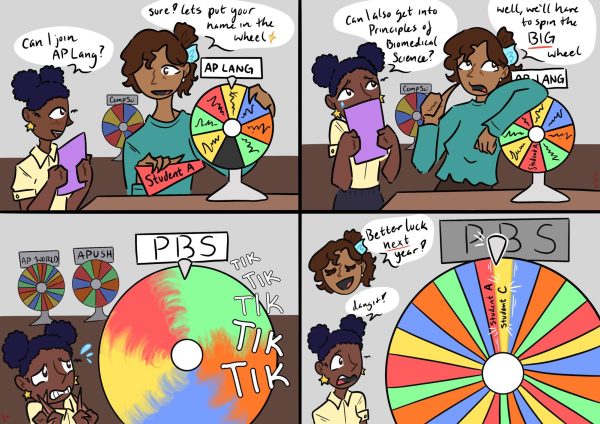Wealth disparities threaten students
Illustration by Keertana Sreekumar
Educational needs cause financial struggle for many students, especially those living in lower-income school districts.
Education has become the sole contributor to economic mobility. A college degree has become the ticket to financial stability and the establishment of generational wealth and success.
Financially affluent families have gone to great lengths to ensure that their children receive quality education, from moving to top ranking districts, hiring SAT tutors, and enrolling in expensive supplemental courses to boost their college applications.
The issue here is that as wealthier families invest in education, the greater the nations’ wealth gap becomes.
Consider the numbers and the problem becomes evident.
SAT tutors can cost more than $50 per hour, according to The Dallas Morning News. Housing prices in top school districts are astronomical – 16 percent greater than in lower ranking districts, according to Medium. The United States Government Accountability Office reports that 40 percent of high poverty schools in California do not offer Advanced Placement courses in high school.
Less financially supported families end up taking the hit when educational resources become monopolized.
Low ranking districts offer fewer resources which lowers students’ quality of education. Living in a low-ranking district is often correlated with being a low-income district, which hinders the opportunity for tutors.
Additionally, financial hardship can influence a person’s decision to apply for internships, participate in school clubs, and attend college.
Students from financially affluent families don’t have the challenges that low-wealth families have, which allows them to focus on building an education that can lead to a financially stable job.
The rest of us don’t have that option.
Children from high-wealth families have a 43 percent chance of receiving a college degree, compared to the 24 percent in low-wealth families, according to the Urban Institute.
Many argue that scholarships and grants are already helping close this wealth gap. The truth is that many of these opportunities are on the basis of income, not generational wealth. Additionally, resources highlighting these opportunities are sparse to say the least.
When grants look into factors such as academic achievement, they rarely consider the poor quality of education applicants are receiving despite this. But dismantling the educational wealth gap is complicated.
Removing property tax as a primary public educational funding resource would decrease financial class separation by requiring all districts to be funded equally. This ensures the quality of education to be standard and levels the playing field, according to United for a Fair Economy. Quite literally, we need to invest in students.
Invest in specialized educational programs and registered counselors to eliminate the disparity in resources for disadvantaged youth. Increase pay for quality teachers and provide a voice for students to express their educational concerns. Additionally, we should eradicate test-based funding that discriminates against low-income students.
And this is coming from someone who is enrolled in an excellent school district located in one of the wealthiest areas in the state. Because of this, I know that finances will never be a barrier to my social mobility.
The same cannot be said by others enrolled in our public education system.

Sophomore Keertana Sreekumar is a first year reporter in the Californian. In her free time she enjoys screenwriting and painting. Her favorite shows are...


